Studio Visit – Jim Biddulph with Fay McCaul
The positive attributes of knitting make it somewhat of an unsung hero in the world of materials. As with its textile cousin weaving, it’s easy to forget that knitting is one of very few processes involved in the construction of fabric. Without the invention of this age-old process we’d have no gloves, scarves, bobble hats and most definitely no turtleneck jumpers to keep us warm during inclement months such as these. But as well as the traditional applications of knit, there are also grounds to celebrate the adaptability and innovation for which the process is capable of here in the 21st century.
In fashion, arguably knitting’s most day-to-day application, there has been an influx of ‘technical’ knitted fabrics on the market in recent years. Nike’s one-piece Flyknit trainers for instance utilise technological developments that expand the performance capabilities of knitted fabrics beyond anything one could have imagined a decade ago.
The same can be said of knit in interior contexts. Whilst the mind might typically imagine soft furnishing of a modest scale such as throws and covers, there are examples of knitted surfaces suitable for wall-coverings, partitions and large-scale installations to be discovered. One such example is Fay McCaul, a designer who combines mixed media, including iridescent acrylic and fibre optics, within rows of individual knitted pockets. Her designs ooze with luxury sensibilities, not least because of the intricate geometric patterns she employs, coupled with the shimmering reflectivity of her chosen materials.
I caught up with her at her London studio to talk more about her work and a current exhibition in Dubai…
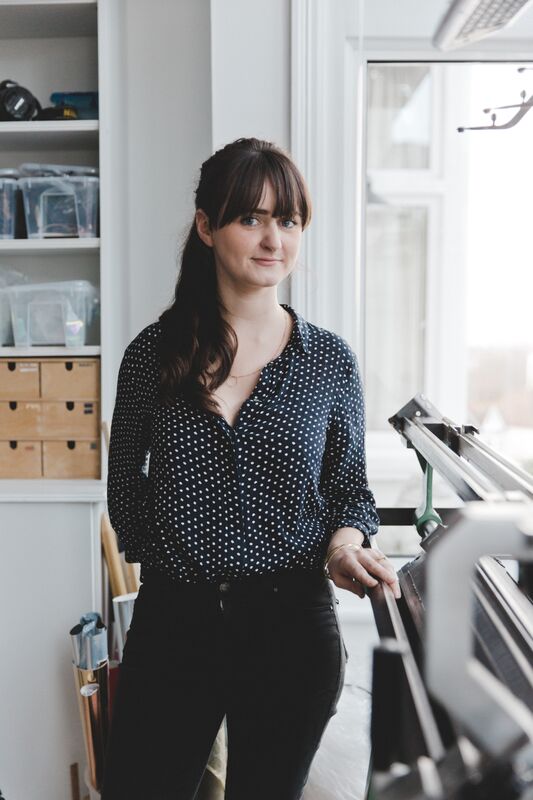
Every time I see your work it seems to have got even more ambitious than the last time; it’s larger in scale, there’s more of it and it seems even more intricate – plus the fact that it’s in an even more amazing space than ever! From the Saatchi Gallery to Tashkeel in Dubai, tell me about this latest project?
Early last year I was invited to be Tashkeel’s first designer in residence for a period of three months. I’d been lucky enough to exhibit my work at Design Days Dubai with the Crafts Council for the previous three years and unbeknown to me the director and founder of Tashkeel, Sheika Lateefa Bint Maktoum, had been following my progress since seeing my knitted Vela Screen on display in 2014. They invited me out of the blue and I decided it was too good an opportunity to turn down.
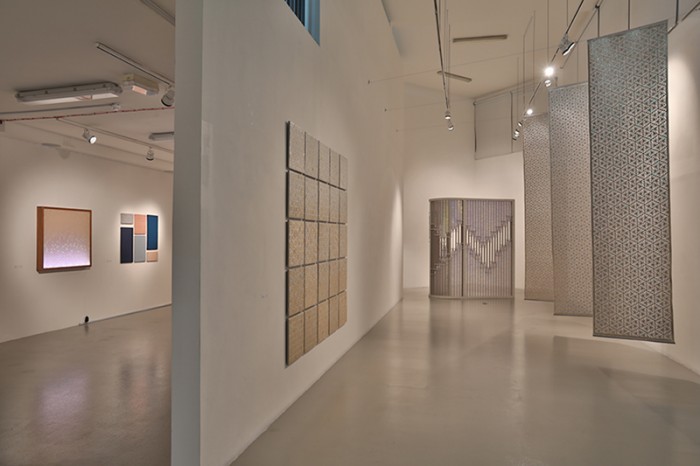
In order for me to continue my practice in their facilities they tried to find a Dubied knitting machine in the UAE which proved fairly impossible. I’d recently developed a new concept of heat bonding materials within fabric rather than knitting them in and suggested that they source heat a press instead so that I could use the time in Dubai to develop this new process. They purchased an enormous heat press for me to work on which was fantastic to use – I created three new pieces of work using the machine during my time there. These pieces are on display at the gallery now alongside some of my previous knitted works, which were shipped from the UK specially. The show is open until the 3rd March.
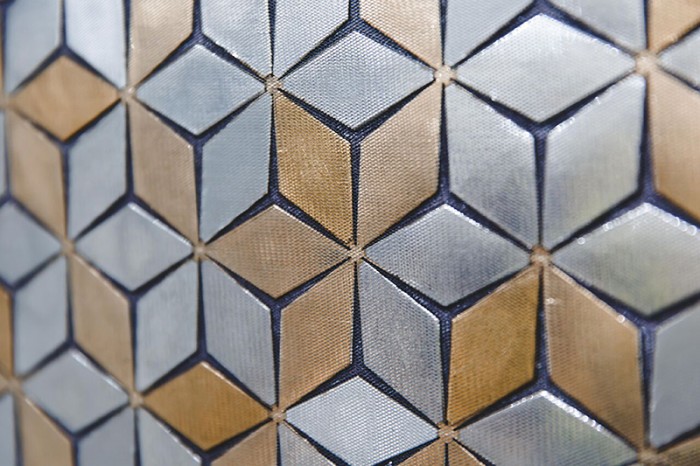
It sounds amazing! It must be great to start the year developing a new process. But how did the rest of 2017 shape up for you?
My 2017 was pretty eventful and exciting. I knitted a huge installation as part of a collaboration with a designer called Kia Utzon-Frank. The installation was made specifically for Collect Open at the Saatchi Gallery and was funded by the Arts Council. When I look back at the making of the piece now I’m not sure how I achieved the knitting in such a short period of time – it was pretty horrific at the time! I had to embed approximately 22,000 individual laser cut rods into the knitted slats one by one. It was all worth it though, the piece looks incredible. We have since exhibited it at Clerkenwell Design Week and it’s currently in Dubai for the ‘In Residence’ exhibition.
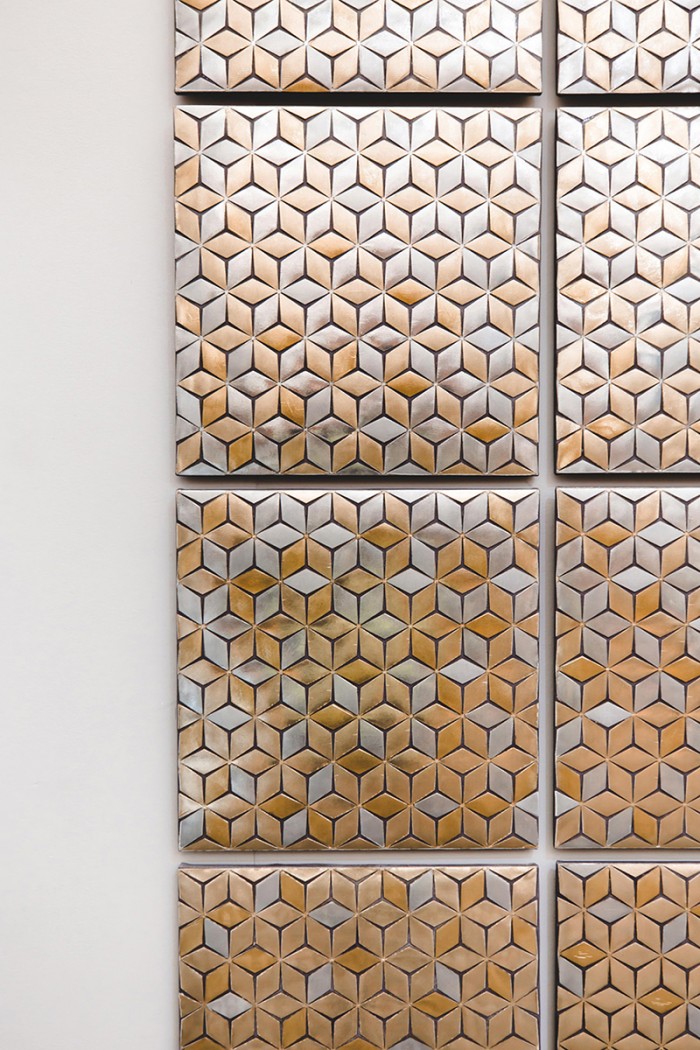
As well as the exhibitions, I’ve also been having some exciting conversations with Solomon & Wu who are interested in potentially manufacturing a new strand of my heat-bonded work. I’ve been experimenting with the idea of embossed felt surfaces for use as acoustic panelling and this is something that we may develop together in order to up-scale the manufacturing process and therefore enable the work to be produced on a larger scale and larger volume.
I imagine knitting creates some restrictions when it comes to manufacturing on a commercial scale, will these new heat bonded developments see you move away from your original training in knit and transform what you do entirely?
Knitting large scale is possible but extremely hard work. By heat bonding surfaces there are less design restrictions as there are with knitting, the fabric can cut and I am able to produce the work at a faster rate.
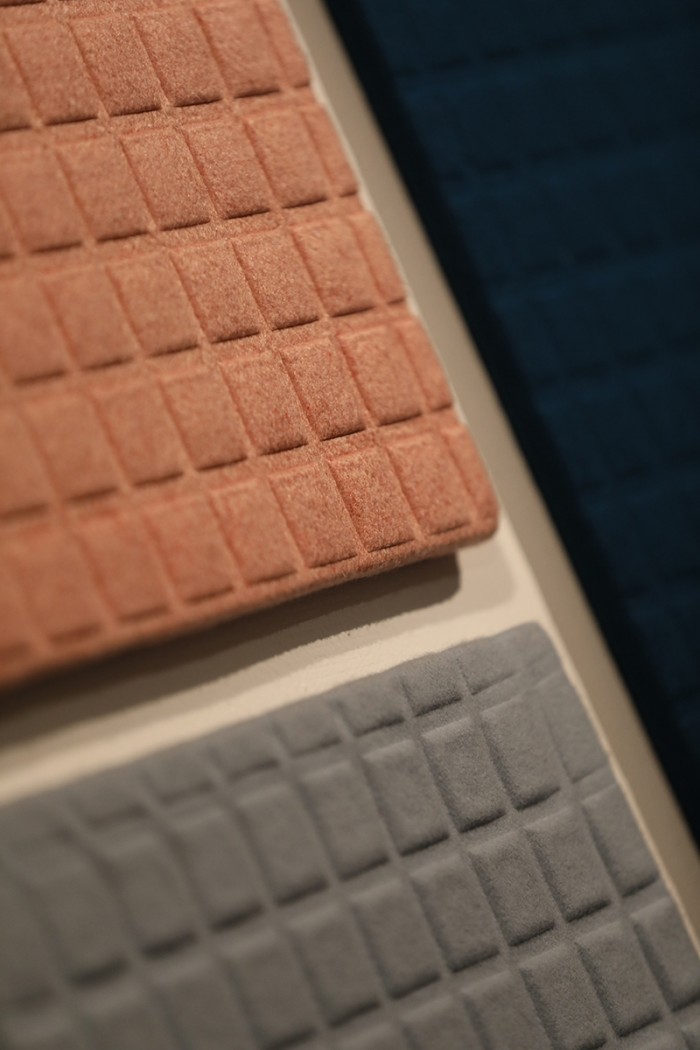
However, the way I see my practice moving forward is having my knitted pieces as the ‘couture’ side of my collection and my new heat bonding technique as my ‘diffusion/ ready-to-wear’ equivalent. Knitting will definitely still be in there!
So we can expect to see lots of large scale panels in 2018 then?
Well, I fell in love with the large format heat press at Tashkeel and think that in order to move forward I’m going to have to bite the bullet and purchase my own. I have a small version in my studio in London but due to size restriction I can currently only make these new surfaces as modular wall tiles with a maximum dimension of 45cm x 45cm.
Despite this the textile wall tiles are proving really popular and working in a modular form enables me to fill large wall areas easily. I usually have the textiles upholstered to wooden boards with split battens on the reverse for mounting but they could also be stretched over framework containing acoustic foam for practical use. So I think you’ll see a number of different sized panels, with a range of different functions this year.
2018 sounds like it has the potential to be even more exciting that 2017! Any other plans and places that we’ll be able to see your work?
Once I have a larger heat press I want to start making long lengths of heat bonded fabrics and find ways of backing them for application as wallpaper. I’ll be exhibiting at Decorex again this year and this is something that I hope to launch in time for the show.
I’ll be heading back to Dubai to take the show down and I have exciting meetings lined up with some interior designers and art consultants, so there could be some very exciting projects in the pipeline for this year. In meantime, I’m working on a commission for a private residence in Sri Lanka.
During my time in Dubai I developed and hosted series of workshops that proved very popular and so this is something that I’m going to continue to pursue now that I’m back in London.
To see more from Fay’s collection and to keep an eye out for future projects check out her website www.faymccaul.com




